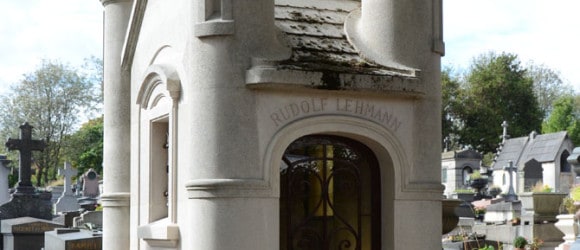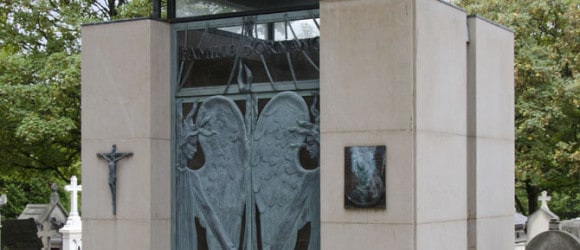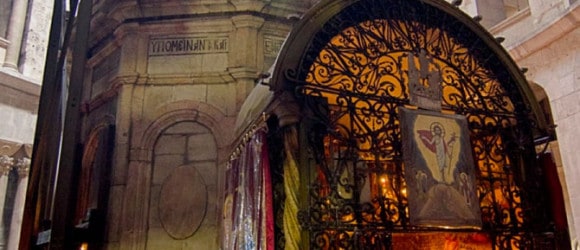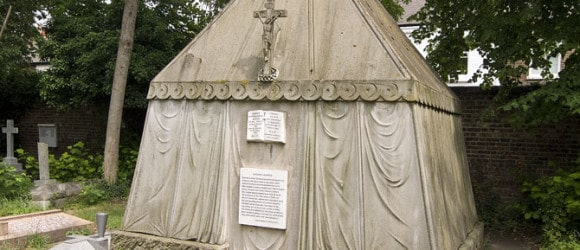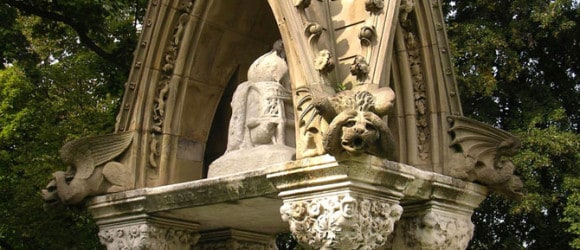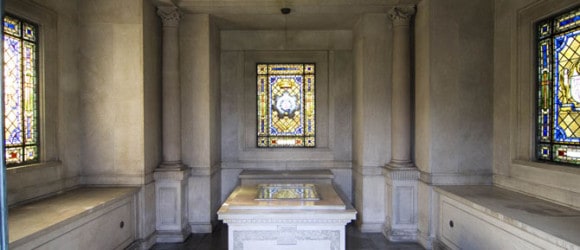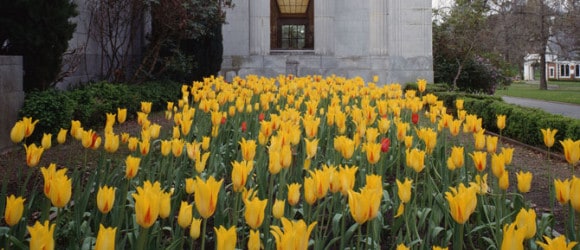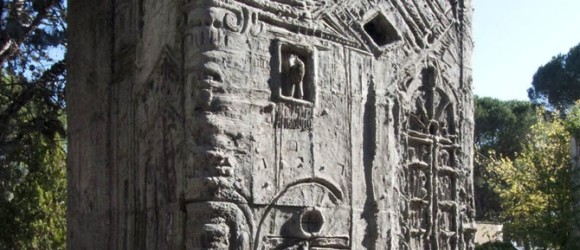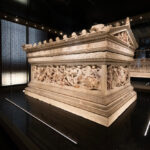Getting Out of Your Furnished Rut
- At December 17, 2013
- By mausoleum
- In Doug Keister's Blog
0
All of us get into ruts, whether it’s in our work or our leisure pursuits. There is a certain comfort with the familiar. But sometimes it’s good to explore new terrain and ideas. When contemplating one’s eternal home it might be worth considering the adventurous and unusual rather than just sticking to traditional styles.
When exploring cemeteries and mausoleums, I look for tombs that are a little (and sometime a lot) different. After all, after exploring dozens and dozens of cemeteries around the world, mausoleums, just like there urban counterparts, mansions, start to look alike. I like to add a little visual spice to my diet.
I seek out those seemingly out-of-place tombs and mausoleums and find myself wondering if the quirky architectural embellishments reflect an eccentric individual, or if, perhaps, the person simply wanted to make a special final statement.
What many people don’t know is that building a mausoleum in a unique style often costs little more than building one using a conventional design. All mausoleums share similar elements. They need to have foundations, crypts, doors, and substantial walls. It is just the details that separate the conventional from the unique.
Read More»Exploring New Dimensions
- At December 10, 2013
- By mausoleum
- In Doug Keister's Blog
0
Traveling through the vast fields of mausoleums in large urban cemeteries in places like New York City and Chicago, it is easy to get the impression that all mausoleums are substantial and authoritative structures. To be sure, most mausoleums are built of rather heavyweight materials. After all, they are designed to last for eternity. And eternity does favor the substantial.
Proper building techniques, combined with an adequate perpetual care plan, enable mausoleum architects to explore unique design options and create some very interesting mausoleums. One material most people don’t associate with mausoleums is large expanses of glass.
To be sure, most mausoleums contain some sort of stained glass window, but modern laminated glass manufacturing techniques render glass virtually unbreakable. Designers use various configurations and sizes of glass to creating a feeling of lightness or airiness.
Read More»The Mausoleum of Jesus
- At August 24, 2013
- By mausoleum
- In Doug Keister's Blog
0
Travelers to the Holy Land will soon find out that there are two places that purport to be the burial place of Jesus. The most famous and well known site is in the Church of the Holy Sepulchre, within the city walls of Old Jerusalem.
The first Church of the Holy Sepulchre was built in the fourth century under orders from the Emperor Constantine. The work was actually supervised by Constantine’s mother, Helena. The story goes that, during Helena’s time there, both Golgotha, the Hill of Calvary, and Jesus’ rock-cut tomb were found in the same area and both were incorporated into the greater church building. The area around the rock-cut tomb is said to have been chipped away, but the tomb itself preserved.
Like much of the history in the Holy Land, specific events have become clouded over time. The original church building was destroyed and, as the centuries ticked on, various parts of subsequent churches were damaged, built, and rebuilt numerous times by various political and religious factions that occupied Jerusalem. Perhaps the most notable episode in the long history of the church is when the Crusaders retook the church from the Fatimids during the First Crusade in 1099.
Read More»A True Story in Stone: Burton Mausoleum
- At May 10, 2013
- By Doug Keister
- In Doug Keister's Blog
0
Tombs and mausoleums often tell a story through the use of statuary, stained glass windows, frieze panels, and architectural embellishments. That story may highlight, among other things, a person’s religious preference, their occupation, and the clubs and societies to which they belonged. However, sometimes, the architectural design of a tomb may tell its own special story.
Read More»The Soda Water King: A Story in Stone
- At May 04, 2013
- By Doug Keister
- In Doug Keister's Blog
0
When visiting cemeteries we often seek out notable people and celebrities, but often the most interesting tombs are for people who have been largely forgotten in popular culture. Thanks to their tombs, we have an opportunity to know them better because each tomb is a story in stone. Such is the case with John Matthews’ tomb in Green-Wood Cemetery in Brooklyn, New York.
Read More»Inside the Chapel Mausoleum
- At April 20, 2013
- By Doug Keister
- In Doug Keister's Blog
0
Granite is the most preferred mausoleum building material. That is certainly the way it should be. When building for eternity, nothing outlasts granite. It is a good choice for mausoleum exteriors because of its durability and hardness as well as its uniform color.
Read More»Springtime and Renewal
- At April 08, 2013
- By Doug Keister
- In Doug Keister's Blog
0
It’s springtime here in Northern California. Everything is blooming. Like many people in my community, I’ve been spending increasingly larger amounts of time outdoors. I’ve been doing a bit of gardening and taken a couple bicycle rides in a nearby park. I’ve also gone to a couple of cemeteries. The cemeteries are abloom with colorful flowers. Some of the first to push through the soil are daffodils and tulips. The newly budded flowers always remind me of the triumph of life.
Read More»Thinking Outside the Box
- At April 03, 2013
- By Doug Keister
- In Doug Keister's Blog
0
We’re all familiar with the old saw “you only have one chance to make a first impression.” Turning the expression on its heels, you only have one chance to make a last impression. In the last couple decades, mausoleum architects and manufacturers have been constructing some truly remarkable last impressions. To coin another phrase, they are “thinking outside the box.”
Although the Golden Age of the Mausoleum was roughly from after the Civil War until the Great Depression, we seem to be entering a new Golden Age. Certainly Classical Revival Style mausoleums dominate cemetery grounds, but more and more creative, fantastical, one-of-a-kind mausoleums are beginning to pepper the cemetery landscape.
Read More»Establishing a Firm Foundation
I began my working life as a photographer in the late 1960s. Although I delved into a bit of photojournalism, mostly what I do is produce “pretty” images. Simply put, I make things look good. I make good-looking things look better. People often compliment me on my mausoleum images and, of course, I don’t mind that at all. But sometimes I want to tell them the story behind the image. I want to tell them how much work it took to craft and capture the finished product. I want to tell them about the foundation, when all they really care about is the finished product.
Read More»